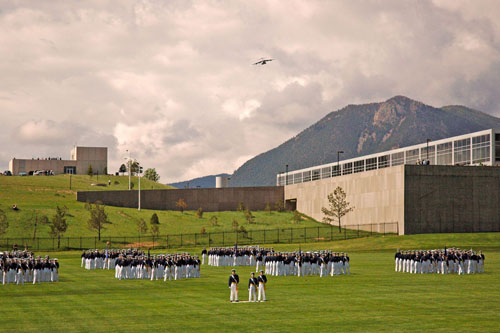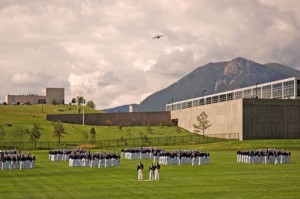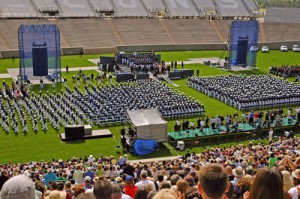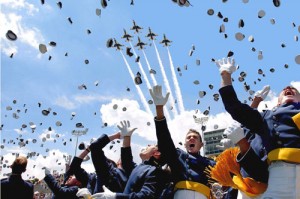By Greg Brown
When Colorado pilots grumble to you about their tough flying weather, take them seriously. Today’s flight marked 8 and a half round trips we’d attempted from Phoenix to visit our son Austin in Colorado Springs, and always there had been problems. So far, blizzards had stranded us twice, we detoured over Albuquerque twice due to strong winds, and thunderstorms delayed us five times, including a reroute over Santa Fe. A third blizzard blocked Colorado Springs altogether—that time Austin rode by four-wheel-drive to Grand Junction, where we picked him up.
Today would prove no exception. For days, I’d eyed the forecast charts for this most important mission, but with each update, the same blob of bad weather shrouded Colorado Springs. Sure enough, when Jean and I launched from Phoenix this morning with our older son, Hannis, dense fog smothered our destination. Fortunately, the skies were clear to Alamosa—from there we could rent a car, if necessary.
Complicating the situation, however, were powerful winds aloft. For the moment, we rocketed along at 200 mph, a happy number rarely seen in our modest Flying Carpet. But those gales had better diminish before we reached Colorado’s high mountain passes, or the long detour over Albuquerque would be required to bypass their angry turbulence. If that happened, who knew where we’d end up?
Luckily, the ridge-top winds dropped below 30 mph just as we reached Cumbre Pass through the snowy San Juan Mountains. Relieved of that concern, I was suddenly assaulted by memories. At this very spot five years ago, a gangly teen pilot had lamented another year of high school before he could attend the U.S. Air Force Academy. Afterwards came more Colorado journeys: cadet orientation, spring break and four successive Parents Weekends. With a lump in my throat, I asked Jean, “How can Austin be graduating already?”
Entering the San Luis Valley, I radioed flight watch for my umpteenth weather update. Now only the Sangre de Cristo Mountains separated us from Colorado Springs, but still our destination languished in cold clouds and mist. With no pilot reports available, I prepared to land at Alamosa. But then I had an idea.
“Is Colorado Springs in your airspace?” I asked the Denver Center controller monitoring our flight. Indeed it was, so I inquired about cloud tops, icing and whether other airplanes were successfully completing instrument approaches to our destination.
“For the moment, everyone’s getting into ‘Springs,'” he replied. “Cloud tops are at 9,000 feet, with above-freezing temperatures and ‘negative icing’ reported on the approach.”
The minimum en route altitude for instrument flying from Alamosa, however, was 14,000 feet.
“La Veda Pass appears clear,” I radioed. “Can you arrange an instrument flight clearance on the other side?”
He could, and did. We navigated the pass visually, and once east of the Rockies skimmed a porcelain cloud deck. Joining the instrument landing system to Colorado Springs, we descended with painful slowness into the soup.
“Please call the runway in sight,” I asked Jean so I could concentrate on the instruments, “and cross your fingers that the weather holds until we get there.”
Six eternal minutes later, the runway materialized a mere 300 feet below us. We touched down elated but shivering; it was 40 degrees colder here than when we left Phoenix.
Of course, our flying ordeals had been nothing compared to the grueling academic and military challenges endured by Austin over the past four years. Along with demanding classwork and intense physical training, the Sept. 11 tragedy had deepened his mission and strengthened his character. A mature and confident young man greeted us upon arrival.
At the graduation parade next morning, we watched formations of soon-to-graduate “firsties” break ranks with their longtime academy squadrons and march symbolically toward new lives as military officers. Then we hosted an honored guest for dinner. At our son’s request, Col. Merrick Krause, an academy grad himself, had flown out from Washington to commission Austin as an officer. Tradition calls for swearing-in at the first allowable moment. Holding back tears, Jean and I pinned on our son’s second lieutenant bars at 12:01 a.m. on graduation day.
Just a few hours later, we reconvened —bleary-eyed—at Falcon Stadium for the main event. Before proud parents and friends, the smartly uniformed cadets marched in precise formation to seats on the stadium floor. I could only imagine their emotions upon receiving their commencement address from the vice president of the United States. A cobalt queue soon snaked to the podium, and as the final graduates shook the vice president’s hand and received their diplomas, cameras and voices rose throughout the stadium.
“Congratulations,” beamed the announcer. “You are dismissed!” Nine hundred and six glistening white parade caps flew simultaneously skyward. At the instant they reached their collective apex, the stadium rocked to a percussive roar. I never saw the F-16s skim overhead, just quaked in their powerful shadows at the instant of passing. The swoop of the Fighting Falcons marked the graduation of this year’s cadets into Air Force officers, and opened the traditional congratulatory air show.
As the Air Force Thunderbirds rocketed aerobatically overhead, our son joined us in the stands smoking a celebratory cigar.
“Austin, will you look back at this afternoon when leaving the academy for the last time?” Jean asked between hugs of congratulation.
“No, Mom,” he replied. “It was a great experience but I’m ready to move on; I’ll soon be flying jets!”
Haggard but fulfilled, Jean and I dodged snow-slathered 14,000-foot peaks at Wolf Creek Pass the next morning, dropping Hannis at Durango for a friend’s wedding before proceeding to Phoenix. After so many weather difficulties along this route, for once only a modest headwind impeded our progress homeward. May the skies ahead for one young academy grad and his many fine classmates prove equally smooth and sweet.
Author of numerous books and articles, Greg Brown is a columnist for AOPA Flight Training magazine. Read more of his tales in “Flying Carpet: The Soul of an Airplane,” available through your favorite bookstore, pilot shop or online catalog and visit [http://www.gregbrownflyingcarpet.com].

















